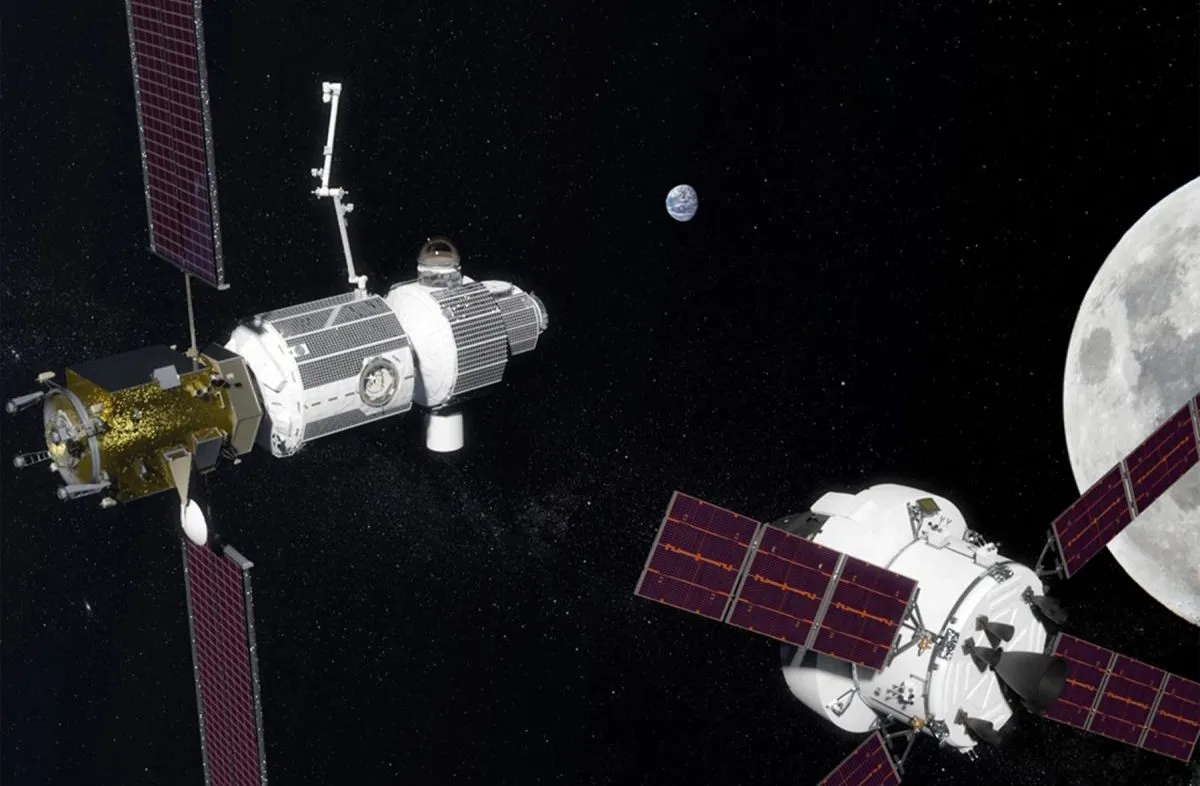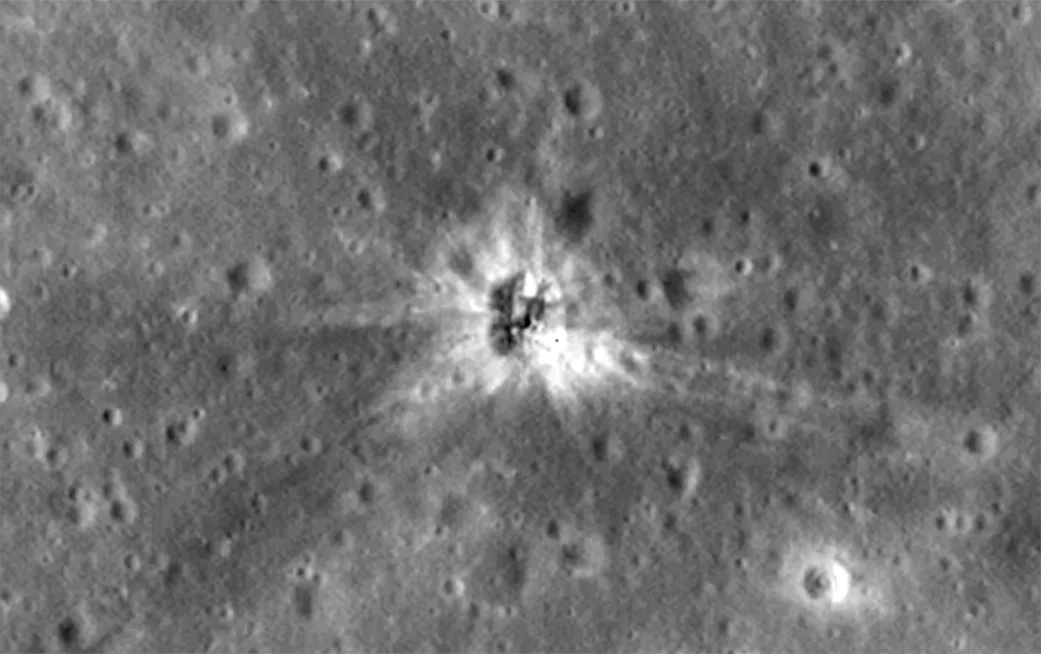Apollo Moonlanding conspiracy theories remain as common today as they ever were; perhaps even more so.
The Apollo 11 Moonlanding remains our finest hour, yet some believe it was faked to convince the world the US had beaten the Soviets in the Space Race.
Where did this idea come from, and how did the Apollo Moonlanding conspiracy theories take hold so easily?

Bill Kaysing’s 1976 book We Never Went To The Moon – America’s Thirty Billion Dollar Swindle, which was sold during growing political mistrust in the post-Vietnam, Watergate era, can take much of the blame.
Apollo Moonlanding conspirac theories lay dormant for a while but gained new life on the internet, and have now implanted themselves in a younger mainstream audience.
How should we respond to these allegations? We can be entertained by them – after all, who doesn’t love the idea of being in on a big secret?
Buzz Aldrin responded by punching conspiracy filmmaker Bart Sibrel in 2002: this is not something we would recommend.
Perhaps instead we can talk about the Apollo programme with the wonder it deserves.
But, in case you are confronted by Apollo sceptics armed with a list of claims, here are some solid rebuttals for you to use.
1
Why did the US flag on the Moon flutter as though there was wind?

This is one of the most oft-touted of the Apollo Moonlanding conspiracy theories.
But don't forget one key fact: on the Moon, the laws of physics still apply.
The US flag that was planted on the lunar surface (bought from a local store in Houston for $5.50) was hemmed at the top so that it hung from a horizontal crossbar fixed on top of the pole.
We see the flag move when the pole is twisted into the ground by the astronaut.
Because there is no air resistance, any residual flag fluttering lasts marginally longer than it would in an atmosphere.
You’ll notice that the flag only moves when (or moments after) the astronaut has handled it.
2
How did the Apollo spacecraft cross the Van Allen Belts?

Moonlanding deniers enjoy focusing on the Van Allen Belts as an impenetrable barrier.
These are areas of geomagnetically trapped, high energy particles that surround Earth.
But a path was set to avoid the most hazardous regions of the belts and the astronauts weren’t in this region for very long as they sped to the Moon, shielded by the skin of the spacecraft.
Any potential radiation hazards were accounted for and flights were scheduled when there were no major solar weather events.
Personal dosimeters (that measure radiation exposure) were worn by all the astronauts and exposure was low, no more dangerous than, say, an X-ray.
Scientist James Van Allan himself dismissed the idea as entertaining nonsense.
3
Why don't the shadows on the Moon look right in Apollo photos?

Non-parallel shadows on the lunar surface? Suspicious multiple light sources? Light fill when the astronauts should be in shadow?
Evidence not of a clandestine cover-up, but of the accusers’ lack of photography and lighting knowledge.
Non-parallel shadows can come from a single light source simply because of perspective, and the uneven topography of the Moon’s hills, dips, bumps and lumps.
Uneven lunar topography can also affect shadow length.
The lunar surface reflects around 8 per cent of the sunlight that falls on it (albedo), illuminating areas – like Buzz Aldrin coming down the lunar module ladder – that might seem like they should be in shadow.
Sunlight was also reflected off the aluminised Kapton foil on the lunar lander and the white spacesuits, as well as off Earth itself as ‘earthshine’.
There are no smoking guns in the photographs. Only evidence of our brains seeking patterns.
4
There are no stars in the background of Apollo images

In Apollo photographs of astronauts on the Moon, there appears to be a lack of stars because the brightness of the lunar day overpowers their faint light.
The Apollo Hasselblad cameras had their exposure and shutter speed set to capture the activity in the bright foreground, so fainter background stars didn’t show up on the film.
To photograph faint stars, like you do in astrophotography, you need a long exposure and wide aperture.
If they’d done that, all the photos would have been overexposed
5
Wasn't the Moon landing filmed by director Stanley Kubrick in a studio?

When President Kennedy made his famous 'we choose to go to the Moon' speech in 1962, the technology to get humans to the Moon and back didn’t exist.
Astronaut Alan Shepard had only made America’s first 15-minute suborbital flight that year.
But in eight years, with the investment of billions of dollars, 400,000 people working for thousands of different companies making rockets, spacesuits, landers, guidance computers and flagpole assemblies made it happen. But only just!
What would have been technologically impossible at the time was to fake it in a studio.
The idea that Stanley Kurbick really filmed the whole thing is one of the more outlandish of the Apollo Moonlanding conspiracy theories.
Video camera technology (used to relay TV footage back to Earth) was primitive, as were film special effects.
Brilliant as Kubrick’s 2001: A Space Odyssey was, the scenes on the Moon’s surface are hardly realistic.
Films like Diamonds are Forever which sees Sean Connery as James Bond interrupting a staged Moon faking scene, and Capricorn One about a faked Mars mission have amplified the idea that the Moonlandings took place in a film studio.
6
Why haven’t we been back to the Moon since Apollo?

Apollo was prohibitively expensive, hazardous, and ultimately unsustainable.
Once President Kennedy’s grand challenge had been accomplished there was neither the political incentive nor budget to keep it going.
However, we are going back to the Moon. Perhaps very soon.
But as ever, such big-ticket projects are at the discretion of short, fickle political cycles, financial priorities, and most importantly, the public appetite.
Evidence the Moonlandings really happened

Moonlanding deniers always fail to account for the vast mountain of direct evidence:
- 382kg of Moon rock brought back and studied by scientists
- Abrasive lunar dust that still covers the spacesuits
- Laser ranger reflectors left on the Moon, which enable scientists to make precise measurements of its distance by firing a laser at them from Earth
- Lunar Reconnaissance Orbiter (LRO) currently in lunar orbit which lets you see with your own eyes the Apollo landing sites
- Conspiracy theorists often talk about faking the Moonlanding, singular – we travelled to the Moon nine times and landed on it six times. Those would have to have been faked too. That’s an awful lot of wool to pull over people’s eyes. If it was faked, wasn’t once enough?
- We have the testimony from those who worked on the project and who made the journey that are still with us today. Are they still keeping it a secret 50 years later?
For the conspiracy mind it’s not about the official ‘evidence’, it’s about seeing patterns that reinforce a personal world view.
The facts are this: for a brief moment in human history we touched the unobtainable.We made the impossible possible.
It’s sad that some of us can only imagine such a bold endeavour being possible as a work of fiction.
Perhaps one day soon we will show we still have that vision, optimism and confidence, and return to the Moon again.
And this time maybe stay a while.
Dallas Campbell is a TV presenter, science writer and author of Ad Astra: An Illustrated Guide to Leaving the Planet